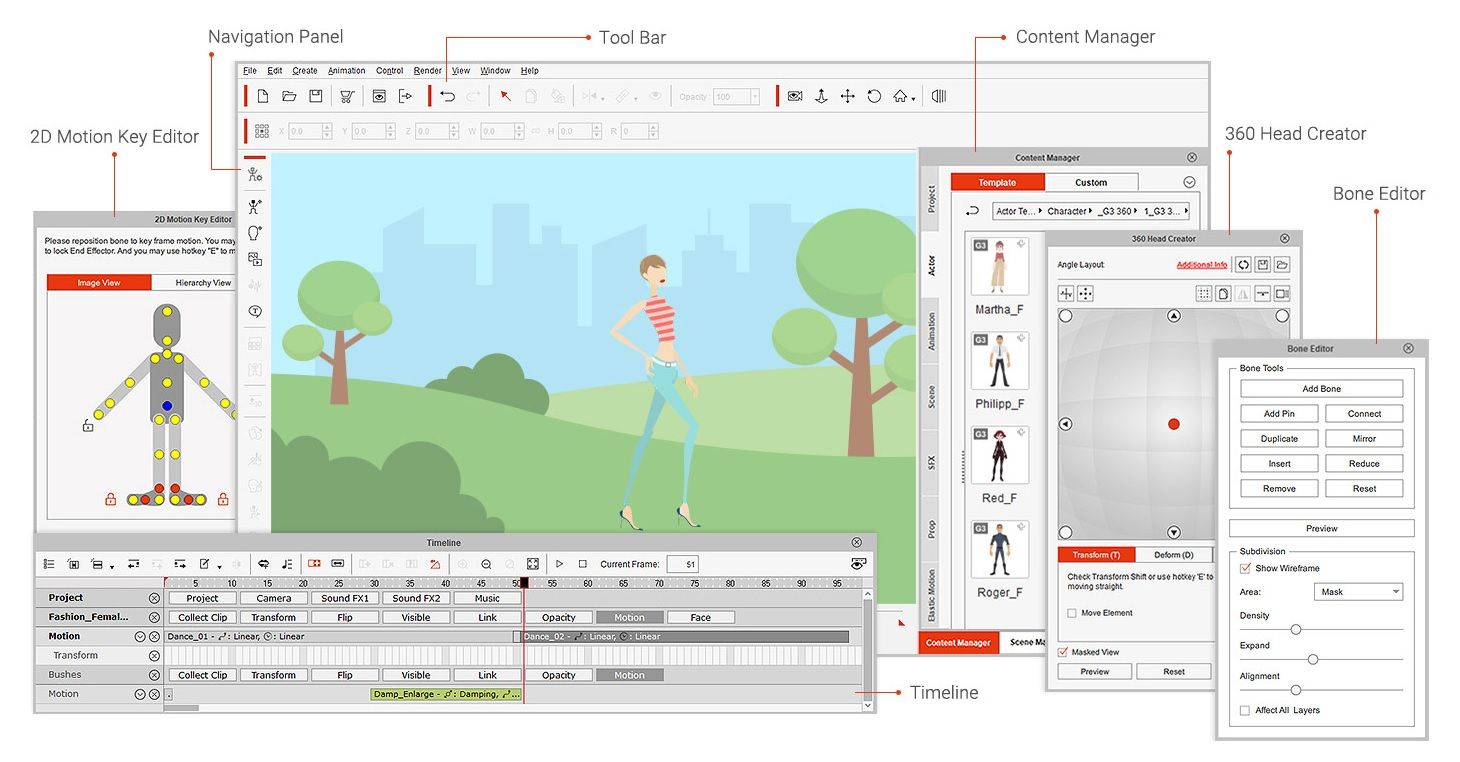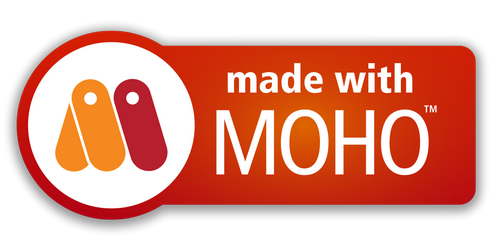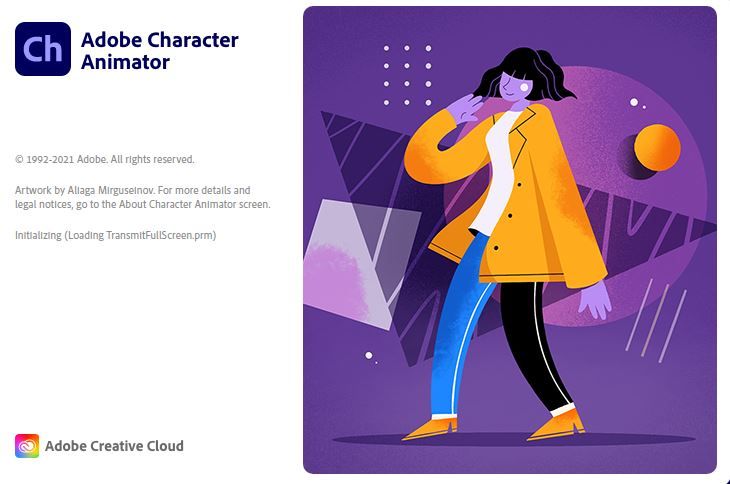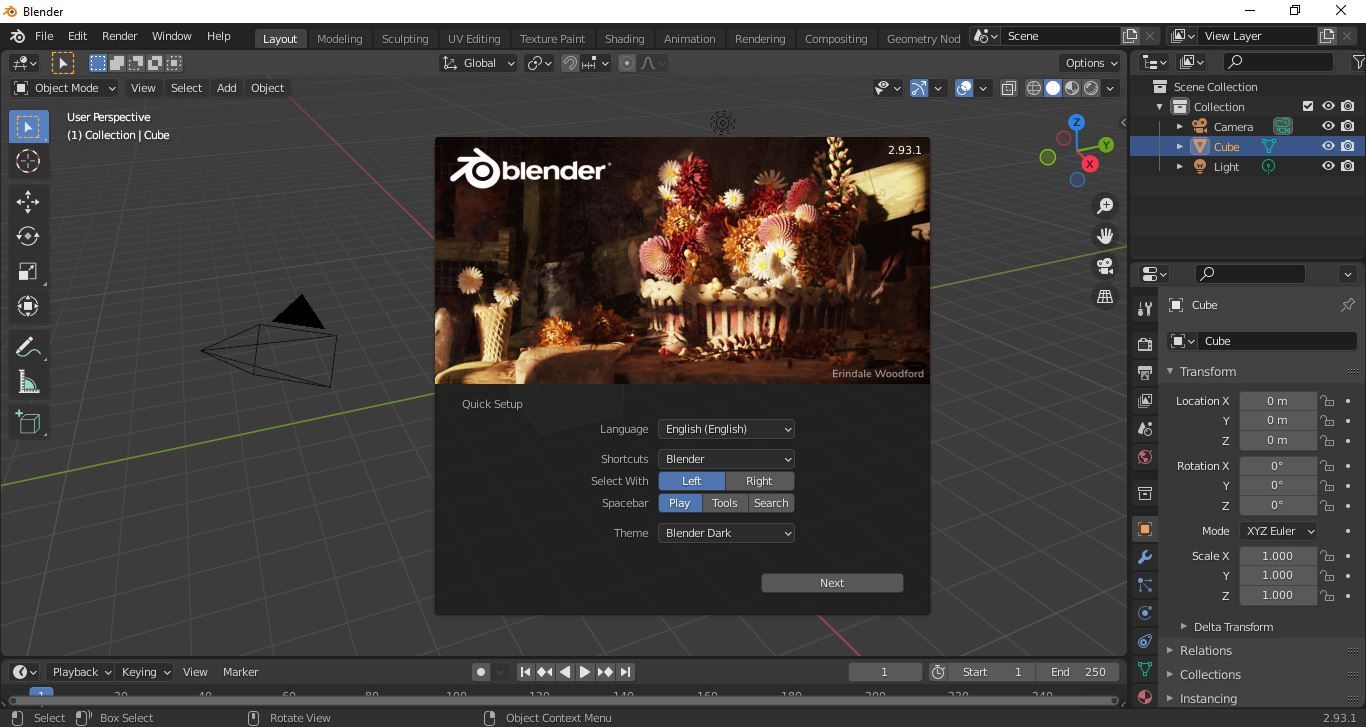What makes an excellent animation program? The top animation programs in the industry focus on two things: artistic flexibility and freedom of use, and the desire to increase the output of the artist.
Beyond that, however, there are many ways to go above and beyond. The perfect system is clean, lean, deep, and a joy for the artist to use.
1. Cartoon Animator 4
Reallusion’s Cartoon Animator 4 serves as a comprehensive, end-to-end 2D animation system suitable for professionals and prosumers alike. Included in its wheelhouse are character design, background construction, prop creation, and VFX, as well. Cartoon Animator 4 is your one-stop destination if speed and ease of use are two of your top priorities.
Cartoon Animator all in one for video production - one continuous line from creating characters until post-production or film editing.
Character Creation:
If Photoshop is the program that you prefer to design in, PSD files can be incorporated into a Cartoon Animator 4 workflow seamlessly. After your animation is complete, it can be sent dynamically to After Effects where the work may continue. Cartoon Animator 4 supports alpha transparency, as well, making it ideal for logo work, motion graphics, and even web design, in some cases.
Skeletons in Cartoon Animator 4 can be rigged with either a traditionally-designed mesh or with any image that has been processed through their skin generator. The Face Puppet tool can be used to nail even very challenging facial expressions.
Character Motion Editing:
Cartoon Animator expands your creative possibilities with 3D motion built for 2D animation. Every adjustment can be made quickly, and ten pre-built heads allow you to dive in immediately without starting from scratch.
Cartoon Animator 4’s true source of appeal, however, is in its low barrier of entry impeding the beginner. Expression templates, brand-name embedded content, and a huge library of generic primitives and motion effects give you everything that you need, right off of the bat. There are over one hundred embed contents at your disposal.
Mocap for Realistic Motion:
Cartoon Animator 4 is known for its accessible suite of character animation assistants, such as motion capture for 2D animation and a plethora of pre-built skeleton hierarchies that can be customized entirely. They also hawk more advanced builds and downloadable behaviors that you can purchase in the Reallusion Content Store.
Facial Animation:
For difficult facial animation, you can use the Face Puppet to create natural and appealing expressions. Ten default profiles instantly define a character's unique personality; you can puppeteer them with reckless abandon thanks to plenty of embedded profiles. These include a dog, a cat, a horse, elastic folks, and five other human types.
Easy 2D Animation for All Video Makers:
The program also allows you to render transparent video for post-production and VFX if necessary. When you finish your character animation, you can render it to After Effects or any other VFX program of your choosing. The application is designed to export your project in a folder hierarchy that will easily be recognized by any suite of post production tools.
Download: Cartoon Animator 4 for Mac | Windows (Free Trial)
2. Moho 13
Moho is a fully-loaded vector-based, 2D animation software, known for its ability to bring complex and emotional scenes to life effortlessly. The quad meshes employed within the program will leave little to be desired in terms of customization and flexibility.
It should be emphasized that Moho is a tool for animators, through and through. Each feature is tailored to the needs of somebody who already has every single asset primed and ready to rumble.
Your options as an animator here are impressive: much like in AE, many automated effects give you the ability to craft complex scenes that immerse the audience in your world.
Among them:
- Particle effects: snowstorms, blankets of falling confetti, and cosmic calamity can all be enhanced by including one or more particle systems into the scene.
- Physics simulators: weather effects like wind and turbulence are easily attained through Moho, but most exciting here will be their gravity simulator. It turns the canvas into a virtual sandbox for you to explore.
- Bone dynamics: Moho keeps everything attached exactly where it should be attached. This also includes the way that Moho interprets flesh mechanics, as well. When animating a face, you can pose each expression candidly and to the extreme, without distorting the character’s face itself.
Despite its reputation as vector-based 2D animation software, Moho also allows the artist to draw directly onto the frame. Your talent is translated directly to the screen, allowing the artist to lean in hard when drawing keyframes and underlying roughs. This tool can also be applied to creating motion paths that various attributes can then be tethered to, yielding a much more natural final result.
Moho offers animators two options to its userbase: Moho Pro 13.5, and Moho Debut 13.5. Built for professionals and novices respectively, both are incredibly robust options for artists of all skill levels. Debut leaves little to be desired for those on a budget; the only imposed limitations will be export length and resolution. Casual users will be unlikely to feel their heads hit the ceiling.
Undeniably one of the most well-rounded 2D rigging programs available, Moho’s Anime Studio sets the bar sky-high. Even perspective drawing is made easy: simply tell the program where the floor is with four handy attachment points. You're already halfway there.
Download: Moho 13 Debut ($59.99)
Download: Moho 13 Pro ($399.99)
3. Toon Boom Harmony
A common misconception: sometimes, “Flash animation” will be used as a catch-all term used to describe any type of modern, digital, 2D animation done over the last couple of decades or so. Not quite the case---Spongebob? Bob’s Burgers? Neither of these shows was created within the Adobe suite.
While Adobe’s Animate may be one of the more commonly-cited 2D animation software systems among the world’s laity, professionals in the game already know that Harmony 20 is what the big boys use. Based in Montreal, Canada, Toon Boom’s Harmony 20 is the uncontested industry standard when it comes to animating in 2D.
The world of commercial 2D animation is demanding, which is why Harmony offers plenty in the way of speed; cut-out animation and rigging are all made possible through a host of puppeting aids. The program boasts a unique blend of 2D and 3D integration, including a fully-loaded lighting and shading system.
Harmony’s innovative workflow also allows the artist to begin by sketching directly onto a live canvas using one of the most advanced brush engines in the game. These drawings can then be rigged and tweened, with plenty of painting and palette tools to aid in the grueling clean-up process, as well.
Their top-of-the-line color management system allows you to manage each phase of the process and to calibrate your work for exhibition, whether your eventual destination will be the web or the big screen. For this reason, Harmony 20 is the textbook example of a truly complete vector-based 2D animation program.
Download: Toon Boom Harmony for Mac or Windows (Free Trial)
4. TVPaint Animation
Storyboard artists rejoice: the design of this program makes it ideal for pre-production, layouts, and animatics. A dedicated Project workspace helps you get organized, breaking your project down into scenes, clips, and frames. Each frame can then be animated in layers.
According to its site, the company prides itself on its ability to provide an interactive experience without a “paper stage”. Basically, they consider themselves a bit closer to something like AE than a traditional drawing board, which is what many of these programs are trying to emulate.
TVPaint’s proprietary Out-of-Pegs feature involves the process of drawing in-betweens. When viewing an onion skin of your animation, you’ll be able to see the frames that precede and succeed the one selected currently as ghosted overlays. The artist uses the superimposition of these keyframe poses to guide them as they draw the intermediary action between each extreme.
Out-of-Pegs gives you the ability to rearrange these frames as you work, which changes the spatial-temporal relationship between both chosen poses. This is useful if you’re, say, animating a walking cycle and want every fourth step to happen a bit more quickly, Chuck Jones-style.
The workspace is dynamic and can be rotated freely as you work, which makes animating in perspective extraordinarily manageable, even for a novice. For cleanup artists, the program’s Color and Texture Generator functionality will be of particular interest, as will an advanced Paint Bucket tool that can be configured to your preference.
The TVPaint ethos is one of versatility and freedom. These developers stop at nothing to avoid limiting what can be done within their system.
Download: TVPaint Animation 11 Pro for Linux, Mac, or Windows
5. Adobe Character Animator
We know it. We love it. We lived through the rebrand. Adobe has got a finger in every pie, the world of 2D animation certainly being no exception. Adobe Character Animator is an experience unlike any other; you, the puppeteer, are able to give your performance in real-time, just like on a real stage.
In accordance with the branded spirit of the suite as a whole, anything done in Adobe's Character Animator can easily be ported to Premiere, After Effects, and anywhere else that you need it to go. The same goes for bringing elements in; Illustrator and Photoshop files can be incorporated into your animation effortlessly.
The product is also able to convert a recorded video performance into coordinated, animated movement and even facial expressions. A Lip Sync feature takes all of the guesswork out of animating dialogue, and their Eye Gaze behavior tracks your gaze as it roves.
All of these tools are meant to facilitate an efficient workflow that removes every layer of abstraction separating you from the work. Triggers can be created to fire off special effects with the click of a button as you animate each puppet. You can either add pre-designed behaviors that can be modified by parameter or you can start fresh, authoring the character’s journey completely on your own.
Download: Adobe Character Animator ($52.99/month)
6. Live2D Cubism
Cubism analyzes a flat asset and outfits it for a 2D+ working environment. Characters brought to life in this way may be deformed and puppeted across the stage without breaking a sweat. Its ability to integrate seamlessly into engines like Unity and Cocos2d-x make Cubism one very viable option for designing mobile apps and games.
In Cubism, the user may modify an object or a parameter using something called a “deformer”. Deformers are the overlaid controls that transform the aforementioned still images into puppets that can be posed and directed. These deformers tell the program where the top and the bottom lips meet, and, with these anchors in place, give you the ability to make the character smile, frown, and speak. The same goes for showing the program where each skeletal joint should be projected; they become the handles with which you move each character around.
These deformers can then be applied to other objects and paths, serving as a sort of adjustment layer that travels readily within the program. Additional blending features give you even more control on this level; you can apply the effect in degrees, even animating them like keyframes if desired.
The company's latest release allows the artist to get their hands on a model shape and to make changes to it without adjusting its appearance on a frame-by-frame basis. These changes will not overwrite any of the movement or behavior already applied, either, giving you an extraordinary amount of flexibility, even after much of the work has already been finished.
If you’ve already got something in front of you, the metadata associated with it can be exported as a CSV file. This includes all of the parts, parameters, deformers, and ArtMesh IDs associated with the object.
This program is used commonly when an animator is working from traditionally drawn source material, such as a graphic novel. Those who come from a background of hand-drawing will be able to make the leap into Cubism without much trouble.
Download: Live2D Cubism for Mac or Windows (Free Trial)
7. Spine 2D
What is Spine 2D? It’s exactly what it says on the tin: this program is focused primarily on the process of designing a skeleton and rigging it for 2D animation. Spine 2D is a very popular choice among game designers. There is an emphasis on automation that leaves more time to be devoted to the game’s vision instead of the nuts and bolts.
During skinning, weights can be applied to the vertices of a flat mesh. These meeting points can then be attached to each bone of the skeleton on an individual basis. The adorned puppet skeleton can now be posed and deformed freely under the constraint of inverse kinematics, if applicable.
When working with their Free-Form Deformation tool, you can do much of the same with one key difference: characters and objects can be morphed using the mesh vertices themselves, outright, sans bones or skeleton. You’re able to squash, stretch, and bend any part of the puppet without restraint.
Spine’s goal is to streamline the game-designing process and to eliminate all of the technical challenges usually associated with creating games, especially in a mobile setting. Organizing your library of assets is a breeze; skins can be swapped on the fly, allowing you to recycle your work whenever possible.
Download: Spine 2D for Linux, Mac, or Windows (Free Trial)
8. Blender
Incredible, but true: Blender is good for much more than 3D animation.
Those familiar with the program will likely think first of the beloved Grease Pencil tool, which allows the artist to draw right into the 3D space bound by the canvas area. While normally used to plan out a scene, to storyboard within the program, or even to leave notes for others inside of the 3D world, you can also use it to create hand-drawn 2D animation.
Drawing with a Grease Pencil in 3 dimensions may be difficult for some to visualize; each stroke becomes an independent object, its structure consisting of points connected by edit lines and the rendered stroke that they form together.
Using Draw Mode, you are able to define the location and the orientation of what you will be drawing with the Grease Pencil. When drawing additively, each stroke compounds upon the one drawn previously, which prevents the program from regarding each stroke as a new object. The entire drawing is kept together on a single layer.
Once you’ve laid them down, each drawing can be modified using Sculpt mode. This workflow does not rely on abstractions of the image, but, rather, allows you to apply different effects directly to it using a brush. Blender builds upon this capability with the Multiframe tool. You’re able to apply the same work to several frames at once as opposed to painting or sculpting the object one frame at a time.
Download: Blender for Linux, Mac, or Windows (Free)
9. Synfig Studio
Another vector-based fan favorite, Synfig Studio does it all without asking for a dime. This straightforward and down-to-earth option will be a welcome reprieve from the astronomical price tags that some of these other types of 2D animation software boast.
A layered timeline complete with vector tweening, expression controls, and an in-app rigging system sets the stage for a rich experience without compromise. Morphing between key poses can be done automatically, making in-betweening a thing of the past.
It’s worth mentioning that Synfig is not meant to emulate a traditional 2D animation experience. Artists who draw by hand will be glad to hear, however, that Synfig does offer plenty in the way of enhancing their traditionally drawn work and converting it into a form that they will be able to work with readily within the program.
Your character designs become bitmaps and vector images. Synfig’s bone-rigging system can then be used to animate these character cut-outs easily. More involved deformations can be created and applied using a Skeleton Distortion layer.
The sky truly is the limit here; you have up to fifty layers of real estate to include fractal effects, parameter transformations, distortive filters, and much more. All of these attributes can be manipulated through the use of expression controls, as well.
Something really exciting about Synfig as a company is that they offer their users an alternate, developmental version of the system when they go to download it. The default, “stable” version comes with every time-tested staple feature that Synfig has mastered completely. The beta version is full of experimental features, unproven and ready to explore.
Download: Synfig Studio for Linux, Mac, or Windows (Free)
10. OpenToonz
Another free-to-use 2D animation program, OpenToonz is open-source and completely customizable. Users have the option of either a raster- or vector-based workflow; the interface puts the camera in your hands, allowing you to swoop through your scene dramatically once it has been laid out. A number of helpful third-party plug-ins are available for you to utilize, as well.
OpenToonz offers support for projects up to 60fps and for output up to 4k. Global effects and VFX can be applied and auditioned quickly using node trees, keeping everything tidy and contained as you make progress.
OpenToonz makes it easy to follow strict brand guidelines; your client may ask that you use a specific palette of predetermined colors, for example. Other helpful features include an on-screen ruler, a bone editor, and a node map feature that makes building objects and characters much easier.
Download: OpenToonz for Mac or Windows (Free)
Our Top Pick? We Might Need a Minute.
The best 2D animation program for you will ultimately depend on what you intend to create with it. Game designers, hobbyists, and, yes, even the diehard professionals among us will likely find something to love about any of the systems mentioned here.
At the end of the day, most of us are here for the love of the craft. As long as your project is fueled by passion, you'll likely be able to excel in any of the above.





